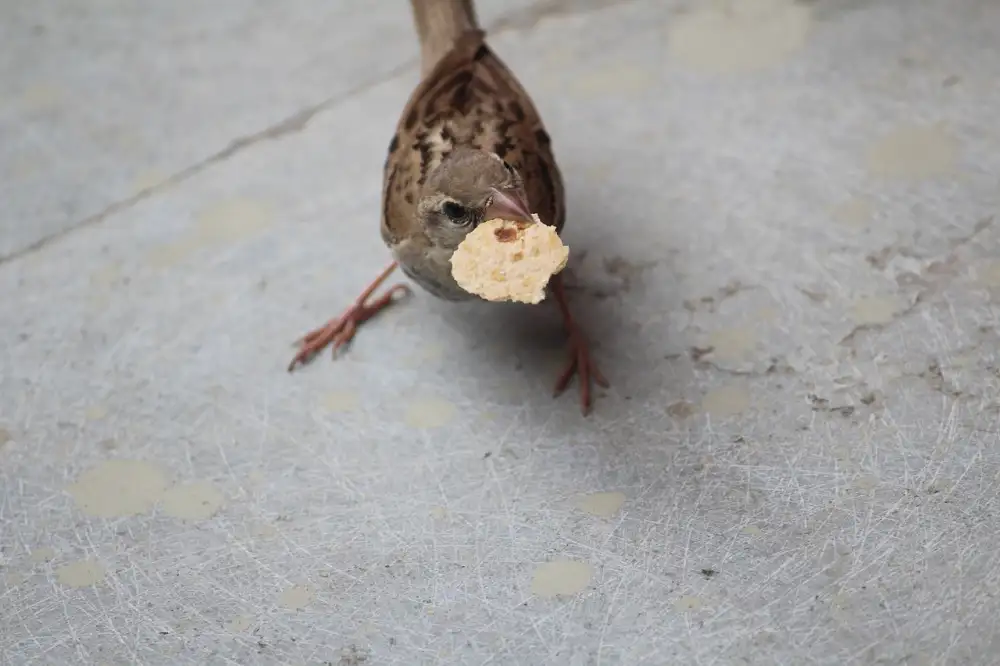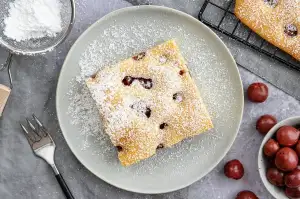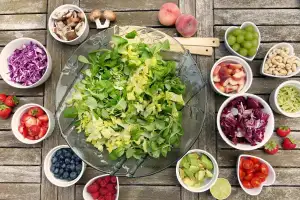Mastering the Art of Chapati: Unleashing the Flavors of Indian Subcontinent's Beloved Unleavened Bread

- History and Cultural Significance of Chapati
- Ingredients Required to Make Chapati
- Step-by-Step Guide to Making Chapati
- Tips and Tricks for Perfect Chapati
- Variations and Regional Adaptations of Chapati
- Serving Suggestions and Pairings with Chapati
- Health Benefits of Chapati
- Frequently Asked Questions about Chapati
Chapati, a traditional Indian flatbread, holds a special place in the hearts and palates of people across the Indian subcontinent. This versatile unleavened bread is a staple in Indian cuisine, loved for its simplicity and ability to complement a wide range of dishes. Whether it's served alongside curries, used as a wrap for kebabs or enjoyed on its own, chapati is a beloved part of everyday meals and festive feasts alike. Join us as we dive into the world of chapati, exploring its history, ingredients, and techniques to master the art of making this delightful bread.
History and Cultural Significance of Chapati
Chapati, a traditional Indian flatbread, holds a rich history and cultural significance in the Indian subcontinent. Dating back thousands of years, chapati has been a staple food in Indian households and is deeply ingrained in the culinary traditions of the region. It is believed to have originated in the Indus Valley Civilization and has since become an integral part of daily meals.
In Indian culture, chapati symbolizes love, nourishment, and hospitality. It is often prepared with care and served fresh to signify warmth and affection towards guests. Chapati-making is considered an art form that is passed down through generations, connecting families and communities.
The cultural significance of chapati extends beyond its role as a mere food item. It represents unity and togetherness as families gather around the dining table to share a meal. Chapati-making also fosters a sense of mindfulness as it requires patience, skill, and attention to detail.
Furthermore, chapati plays a vital role in religious ceremonies and festivals across India. It is often offered as prasad (blessed food) during religious rituals or used as an essential component of holy offerings. The act of making chapatis during these occasions carries spiritual significance and serves as a way to connect with one's faith.
As chapati continues to be cherished by generations, its history and cultural significance remain deeply rooted in the hearts of people across the Indian subcontinent.
Ingredients Required to Make Chapati
To make chapati, you will need just a few simple ingredients. The main ingredient is whole wheat flour, also known as atta, which gives chapati its distinct nutty flavor and soft texture. You will also need water to form the dough and a pinch of salt to enhance the taste.
Some variations of chapati may include additional ingredients like oil or ghee (clarified butter) for added richness and flavor. However, these are optional and not necessary for basic chapati.
The beauty of chapati lies in its simplicity, as it requires minimal ingredients that are easily accessible. So gather your whole wheat flour, water, and salt, and let's get started on mastering the art of making this delightful Indian flatbread!
Step-by-Step Guide to Making Chapati
1. In a large mixing bowl, combine 2 cups of whole wheat flour and a pinch of salt.
2. Gradually add water while kneading the dough until it becomes smooth and elastic.
3. Divide the dough into small balls, about the size of a golf ball.
4. Dust each ball with flour and roll it out into a thin, circular shape using a rolling pin.
5. Heat a tawa or flat griddle over medium-high heat.
6. Place the rolled chapati on the hot tawa and cook for about 30 seconds or until bubbles start to form.
7. Flip the chapati and cook for another 30 seconds or until brown spots appear.
8. Remove from heat and brush with ghee or butter for added flavor.
9. Repeat the process with the remaining dough balls, keeping cooked chapatis warm in a clean kitchen towel.
10. Serve hot and enjoy the delicious homemade chapatis with your favorite curry or dish!
Tips and Tricks for Perfect Chapati
To achieve perfect chapatis, here are some tips and tricks to keep in mind:
1. Use the right flour: Chapati flour, also known as atta, is made from whole wheat grains and provides the best texture and flavor.
2. Knead the dough well: Properly kneading the dough helps develop gluten, resulting in soft and pliable chapatis. Knead for at least 5-7 minutes until the dough is smooth.
3. Rest the dough: Allow the dough to rest for at least 30 minutes before rolling it out. This relaxes the gluten and makes it easier to roll without shrinking back.
4. Roll evenly: Roll out each chapati evenly to ensure even cooking. Apply gentle pressure while rolling to maintain a round shape.
5. Control heat: Cook chapatis on medium-high heat to ensure they puff up nicely. Too low heat will result in hard chapatis, while too high heat may burn them.
6. Flip at the right time: Flip the chapati when you see small bubbles forming on one side. This allows both sides to cook evenly and promotes puffing.
7. Press gently: Use a clean cloth or spatula to press down gently on areas that are not puffing up during cooking. This encourages even puffing throughout.
8. Keep them warm: After cooking each chapati, wrap it in a clean kitchen towel or place it in a covered container to keep them soft and warm until serving.
By following these tips and tricks, you'll be able to create perfectly soft, fluffy, and delicious chapatis every time!
Variations and Regional Adaptations of Chapati
Variations and regional adaptations of chapati are a testament to the diverse culinary traditions across the Indian subcontinent. In North India, the popular variation is "phulka," where the dough is rolled thinner and cooked on direct flame until it puffs up beautifully. In Gujarat, "thepla" steals the show with its addition of spices like turmeric, cumin, and fenugreek leaves. The southern states have their own versions like "roti" in Karnataka and "pathiri" in Kerala. These variations showcase the creativity and ingenuity of different regions, making chapati a truly versatile bread enjoyed throughout the subcontinent.
Serving Suggestions and Pairings with Chapati
Chapati, with its versatile nature, pairs well with a variety of dishes. It can be enjoyed alongside curries, stews, and dals, where it acts as the perfect vessel for scooping up the flavorful gravies. For a traditional Indian meal, serve chapati with popular dishes like butter chicken, palak paneer, or chole masala.
For a lighter option, pair chapati with fresh salads or raita (yogurt-based dip). The soft texture of chapati complements the crispness of salads and adds a hearty element to the meal. You can also use chapati as a wrap for fillings like grilled vegetables, paneer tikka, or kebabs.
In addition to savory options, chapati can also be enjoyed in sweet preparations. Spread some ghee (clarified butter) on warm chapatis and sprinkle them with sugar and cardamom powder for a delightful treat. Another popular sweet pairing is serving chapati with a dollop of creamy kheer (rice pudding).
No matter how you choose to serve it, chapati adds an authentic touch to any Indian meal. Its simplicity allows it to complement and enhance the flavors of various dishes while providing a satisfying base for any culinary creation.
Health Benefits of Chapati
Chapati, the traditional Indian flatbread, not only tantalizes our taste buds but also offers numerous health benefits. Made from whole wheat flour, chapati is rich in fiber, promoting healthy digestion and preventing constipation. It is low in fat and cholesterol-free, making it a heart-healthy choice. The complex carbohydrates in chapati provide sustained energy release, keeping you full for longer periods. Additionally, chapati is packed with essential nutrients like vitamins B and E, iron, calcium, and magnesium. Incorporating chapati into your diet can help maintain a healthy weight and support overall well-being.
Frequently Asked Questions about Chapati
1. Can I use whole wheat flour instead of atta to make chapati?
Yes, you can substitute whole wheat flour for atta in chapati recipes. However, keep in mind that atta is specially milled to produce a finer texture and softer chapatis.
2. Can I make chapatis without a tawa or griddle?
While a tawa or griddle is traditionally used to cook chapatis, you can also use a non-stick pan or even an iron skillet as alternatives.
3. How do I store leftover chapatis?
To store leftover chapatis, allow them to cool completely and then stack them with parchment paper in between each one. Place the stack in an airtight container and refrigerate for up to 2 days.
4. Can I freeze chapati dough?
Yes, you can freeze chapati dough for future use. Divide the dough into individual portions, wrap tightly in plastic wrap or freezer bags, and freeze for up to 3 months. Thaw overnight in the refrigerator before using.
5. How do I reheat leftover chapatis?
To reheat leftover chapatis, lightly brush them with water on both sides and heat them on a hot tawa or skillet until they become soft and pliable again.
6. Are there any gluten-free alternatives to traditional chapati?
Yes, you can make gluten-free versions of chapati using flours like rice flour, chickpea flour (besan), or a combination of gluten-free flours available in the market.
7. Can I make stuffed parathas instead of plain chapatis?
Absolutely! Stuffed parathas are a delicious variation of plain chapatis where various fillings like spiced potatoes, paneer (Indian cottage cheese), or vegetables are added before rolling out the dough.
8. Is it necessary to add oil or ghee while making chapatis?
Adding oil or ghee to the chapati dough helps to keep them soft and pliable. However, if you prefer a healthier option, you can omit the fat and still make tasty chapatis.
Remember, practice makes perfect when it comes to making chapatis. Don't be discouraged if your first few attempts are not perfect. Enjoy the process and savor the flavors of this beloved Indian flatbread!
In conclusion, chapati is a versatile and beloved staple of Indian cuisine. Its simplicity in ingredients and preparation make it accessible to anyone wanting to explore the flavors of the Indian subcontinent. Whether enjoyed with curries, stews, or as a wrap filled with various fillings, chapati adds a delightful touch to any meal. So go ahead, master the art of making chapati and unleash the flavors of this traditional Indian flatbread in your own kitchen. Enjoy!
Published: 05. 12. 2023
Category: Food



